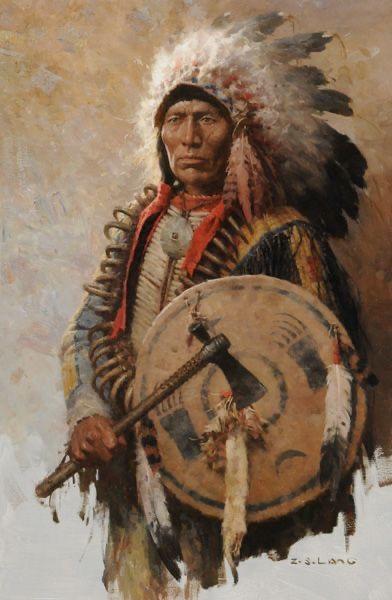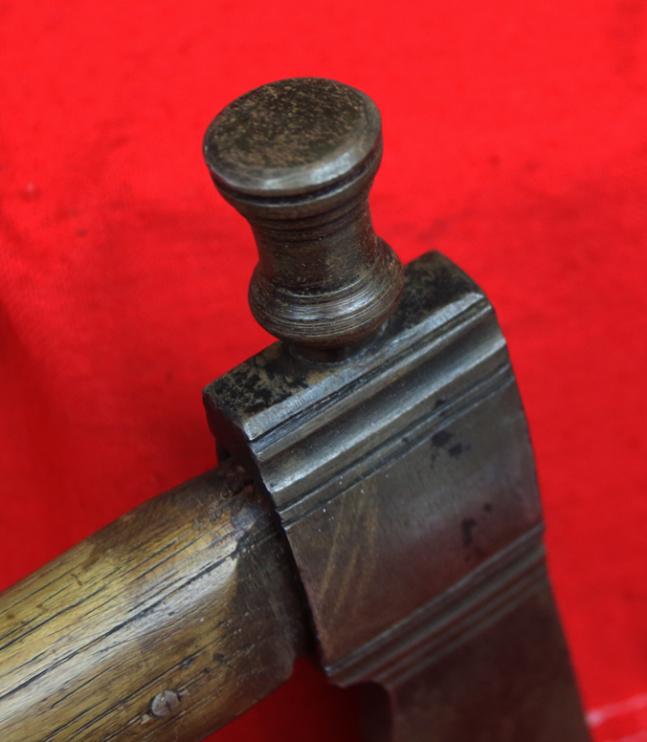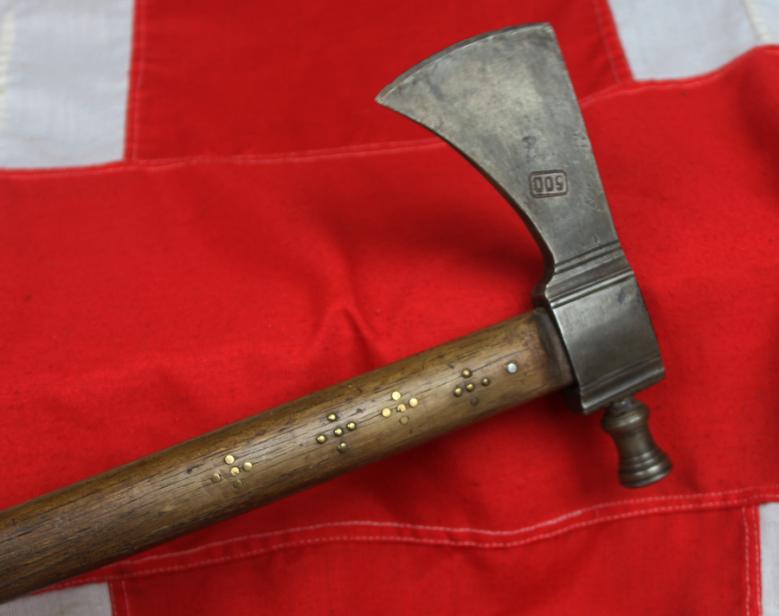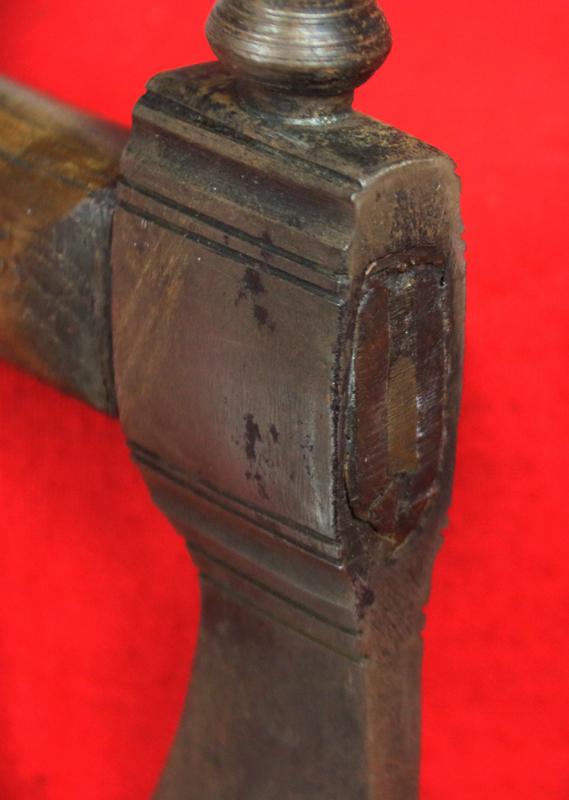A Superbly Attractive Native American Trade Style Tomahawk Axe, Typical Import Pattern With Trader’s Inventory Stamp. Reservation Period
With studded wooden haft, the axe with single curved blade and rounded opposing pole hammer. Probably 19th century or later. The metal trade tomahawk has long been an object of fascination for both the amateur collector and the ethnologist. Few other implements have ever combined so many different
functions: tool, weapon, sceptre, symbol and smoking pipe. In this one instrument is collected the lore of handicraft, warfare, prestige, ceremony and personal comfort. Captain John Smith is beheved to have been the first to bring the word into English in his brief vocabulary of Indian terms prepared sometime during the years 1607-1609, when he defined tomahaks simply as meaning "axes." Later he added that the term was applied to both the native war club and the imported iron trade hatchet. Almost from the moment the Native American Indian first saw the metal hatchet or tomahawk, likely made in Sheffield, England, he coveted it, and sought to possess one for himself. The efficiency of the new implement was readily apparent : it was deadlier in combat, more efficient in cutting wood, and just as useful as a ceremonial object. Although it was an excellent weapon, the new American man was not as reluctant to trade it as he was to dispense guns. The axe was also self-sufficient; it could function without such components as powder and ball that had to be obtained from the traders. Thus the hatchet could and did spread rapidly through Indian trade routes far from the points of frontiersman’s contact, reaching tribes and areas as yet unknown to the few Europeans along the coast. The first contact of the Indian with the iron or steel axe undoubtedly occurred with the arrival of the Vikings, and to judge from accounts in the sagas, the meetings were not auspicious. Two instances are recounted which may well be the first recorded encounters of the Indian with the weapon which later was to become almost synonymous with his warfare. The Saga of Eric the Red recalls the first reported battle of the Vikings with the natives of America
“The Skrellings Indians, moreover, found a dead man, and an axe lay beside him. One of their number picked up the axe and struck at a tree with it, and one after another they tested it and it seemed to them to be a treasure, and to cut well; then one of their number seized it, and hewed at a stone with it so that the axe broke, whereat they concluded that it could be of no use, since it would not withstand stone, and they cast it away.”
But not all Indians thought the same.
The potentialities of the axe as a weapon were apparent to the Indian from the outset. Garcilaso de la Vega tells of a bloody fight between an Indian armed with a captured battle axe and several of De Soto's soldiers, in which he even includes a i6th century version of the old story of a man being cut in two so quickly by a keen blade that he remains standing and has time to pronounce a benediction before falling. In Florida, Jacques LeMoyne illustrated the murder of a colonist by an Indian with an axe during the brief French settlement at Fort Caroline, 1564-1565. By the early 17 th century the tomahawk was firmly established in the minds of the white settlers as the Indians' primary weapon, and was much more feared than the bow and arrow. Even after the Indians had obtained a sizeable number of firearms, the tomahawk retained its popularity and importance. Once a gun had been fired, it was useless until it could be reloaded ; an edged weapon was needed as a supplement, and this was the tomahawk. Moreover, for surprise attacks and raids, a firearm was frequently out of the question. This axe’s trade stamp could be a weight mark, or even a quantity mark. Lists of trade goods and treaty gifts indicate that the axe, hatchet, or tomahawk were among the most desired objects. As many as a quantity of 300 axes might be handed out at one treaty meeting, and Sir Wilham Johnson estimated that the Northern Indian Department needed 10,000 axes for trade purposes in the year 1765 alone. This is a 19th century trade axe.
Head 7.5 inches, x 3.25 inches length 20.5 inches. We cannot ship this item to the US.
Code: 23386
975.00 GBP





